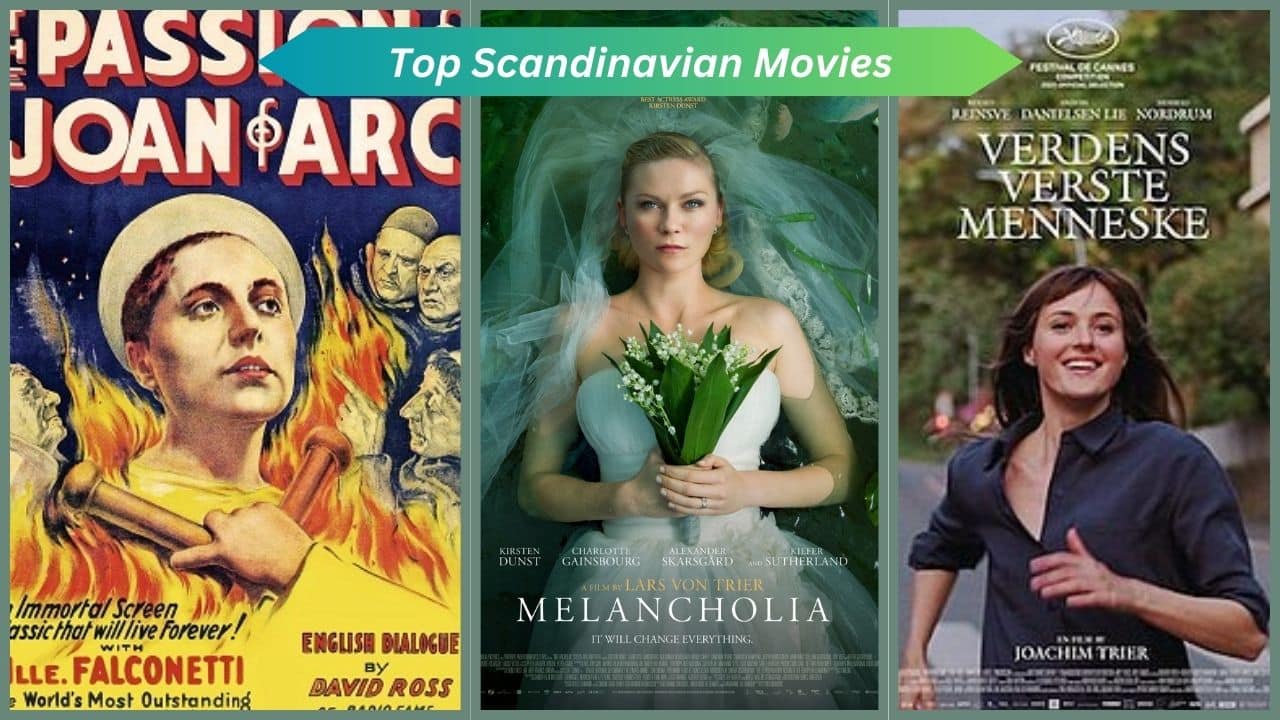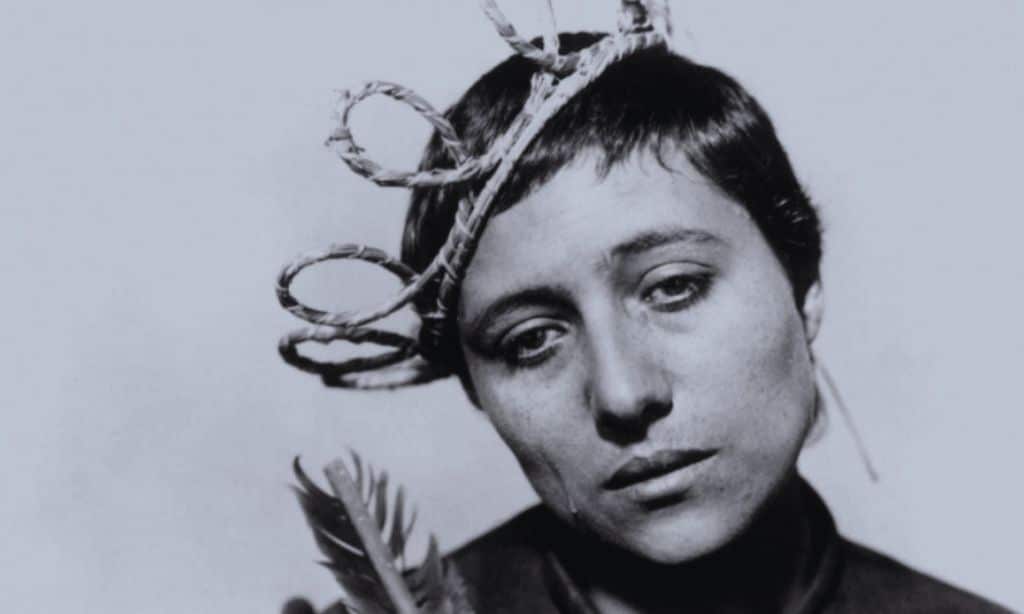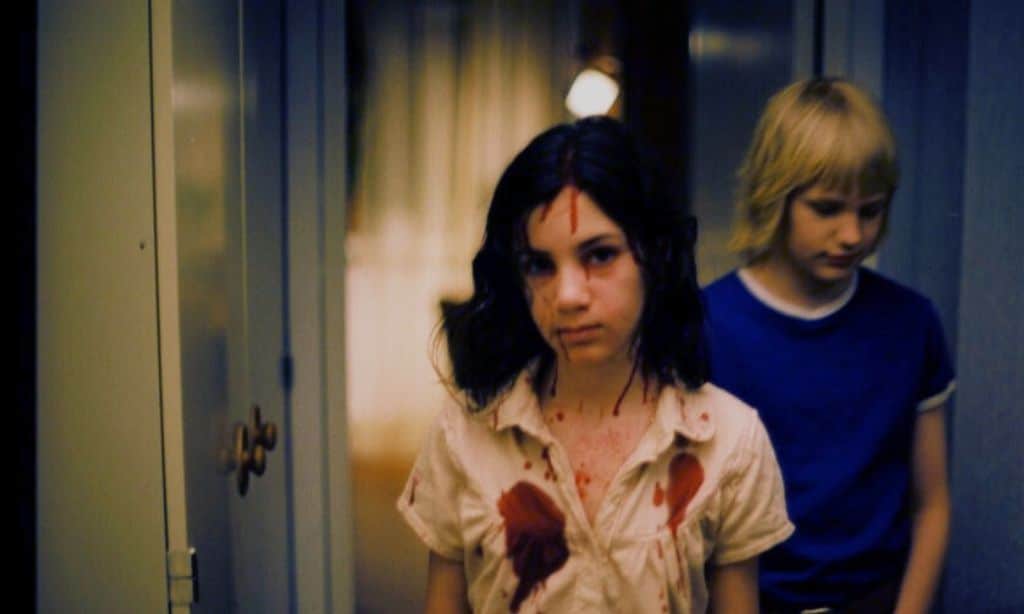Scandinavian cinema has long been celebrated for its distinctive storytelling and profound emotional depth. While the cozy concept of hygge has captured global attention, Scandinavian films have carved their own unique path, delving into complex themes with a blend of dark humor, intense atmosphere, and existential inquiry.
These 8 must-see Scandinavian movies, each a masterpiece in its own right, are essential additions to any film enthusiast’s collection. Let’s explore why these Scandinavian gems deserve a spot in your watchlist.
1. Denmark: The Passion of Joan of Arc (1928)—Directed by Carl Theodor Dreyer
The Passion of Joan of Arc stands as a monumental achievement in silent cinema, renowned for its innovative use of close-ups and the raw emotional power it conveys. Renée Falconetti portrays Joan of Arc’s harrowing trial and execution in this film under the direction of Carl Theodor Dreyer with unmatched intensity.
Falconetti’s performance is often hailed as one of the most moving in film history, her expressive face conveying profound sorrow, determination, and anguish without a single spoken word.
The film’s striking visual style, characterized by extreme close-ups and minimalist sets, draws viewers deep into Joan’s psychological and emotional turmoil. Upon its release, the film faced censorship and controversy, particularly from religious authorities who found its portrayal unsettling. Despite initial pushback, The Passion of Joan of Arc has since been recognized as a cornerstone of cinematic artistry, influencing generations of filmmakers with its bold narrative and technical brilliance.
2. Sweden: Persona (1966)—Directed by Ingmar Bergman
Ingmar Bergman’s Persona is a profound exploration of identity, reality, and the human psyche. This Swedish masterpiece delves into the intertwined lives of two women: Elisabet Vogler, a renowned actress who has suddenly ceased speaking, and Alma, her nurse who becomes deeply entangled in Elisabet’s enigmatic world.
Through their intense interactions, Bergman blurs the lines between self and other, reality and illusion, creating a psychological labyrinth that challenges viewers to question the nature of the self.
The film is celebrated for its exceptional performances by Liv Ullmann and Bibi Andersson, whose characters engage in a series of conversations that reveal their deepest fears, desires, and insecurities. Bergman’s use of symbolic imagery and innovative narrative techniques further enhances the film’s introspective quality. Persona is not just a film but an experience that invites audiences to reflect on their own identities and the masks they wear in everyday life.
3. Denmark: The Pusher Trilogy (1996–2005)—Directed by Nicolas Winding Refn
Nicolas Winding Refn’s The Pusher Trilogy offers a gritty, unflinching portrayal of Copenhagen’s criminal underworld. Comprising three films—Pusher (1996), Pusher II (2004), and Pusher III (2005)—the trilogy follows the tumultuous lives of drug dealers and their associates, painting a raw and realistic picture of addiction, desperation, and survival.
In the first installment, Pusher, we meet Frank, a small-time drug dealer struggling to pay off a massive debt to a ruthless crime lord. Mads Mikkelsen delivers a standout performance as Tonny, Frank’s loyal yet troubled sidekick, whose presence adds depth and complexity to the narrative. Refn’s direction is characterized by its stark realism, handheld camera work, and intense character studies, which immerse viewers in the bleak and volatile environment of Copenhagen’s streets.
The trilogy not only shocked audiences with its unvarnished depiction of crime and its consequences but also established Refn as a formidable talent in international cinema. The Pusher Trilogy laid the groundwork for Refn’s subsequent success, including his acclaimed film Drive (2011), further cementing his reputation for crafting visually striking and emotionally charged stories.
4. Denmark: Festen (1998) – Directed by Thomas Vinterberg
Festen (The Celebration) is a groundbreaking film that marked the inception of the Dogme95 movement, a Danish filmmaking initiative that emphasized naturalism, minimalism, and a rejection of traditional cinematic techniques. Thomas Vinterberg’s film Festen takes place during a lavish family birthday celebration that takes a dark turn as long-buried secrets and upsetting truths come to light.
Using handheld cameras and on-location shooting, Vinterberg creates an intimate and immersive atmosphere that heightens the tension and emotional intensity of the narrative. The film delves into themes of family dysfunction, repression, and the facade of respectability, exposing the hidden pain and hypocrisy beneath the surface of a seemingly perfect household.
Festen is both a powerful character study and a social critique, offering a raw and unfiltered look at the complexities of human relationships.
As the first film of Dogme95, Festen set the tone for a new wave of Scandinavian cinema that prioritized authenticity and emotional resonance over polished production values. Its success demonstrated the viability of independent filmmaking and inspired countless directors to explore similar approaches in their work.
5. Sweden: Let the Right One In (2008) – Directed by Tomas Alfredson
Tomas Alfredson’s Let the Right One In is a unique take on the vampire genre, blending horror with a poignant coming-of-age story. Set in the icy suburbs of Stockholm, the film centers on the unlikely friendship between Oskar, a lonely and bullied twelve-year-old boy, and Eli, a mysterious girl who moves into his neighborhood.
As their bond deepens, Eli reveals her true nature as a vampire, and their relationship becomes a metaphor for the struggles of adolescence, loneliness, and the longing for connection. The film deftly balances moments of horror and tension with tender and heartfelt scenes, creating a hauntingly beautiful narrative that resonates on multiple levels.
Let the Right One In is praised for its atmospheric cinematography, compelling performances—particularly by Kåre Hedebrant as Oskar and Lina Leandersson as Eli—and its ability to infuse the supernatural elements with genuine emotional depth. The film has garnered international acclaim and spawned remakes and a loyal fanbase, solidifying its place as a standout in both Scandinavian and global cinema.
6. Denmark: Melancholia (2011) – Directed by Lars von Trier
Melancholia is a visually stunning and emotionally intense film that explores themes of depression, existential dread, and the inevitability of fate. Directed by Lars von Trier, the film is divided into two parts, each named after one of the main characters: Justine and Claire. The story centers on Kirsten Dunst’s character Justine and her battle with severe depression in contrast to the impending threat of Melancholia, a rogue planet, heading in Earth’s direction.
As the story unfolds, viewers witness the unraveling of familial relationships and the varied human responses to impending doom. Charlotte Gainsbourg co-stars as Claire, Justine’s sister, whose anxiety and fear contrast sharply with Justine’s detached resignation. Von Trier’s masterful direction combines breathtaking visual effects with intimate character studies, creating a film that is both a spectacle and a deep psychological exploration.
Melancholia received critical acclaim for its bold storytelling, stunning visuals, and powerful performances, particularly Dunst’s portrayal of a woman grappling with inner turmoil. The film sparked conversations about mental health and our place in the universe, further establishing Lars von Trier as a provocative and influential figure in European cinema.
7. Sweden: Triangle of Sadness (2014) – Directed by Ruben Östlund
Ruben Östlund’s Triangle of Sadness is a darkly comedic and incisive critique of modern society, exploring themes of wealth, power, and societal expectations. Set against the backdrop of a luxury cruise ship, the film follows a diverse group of passengers and crew whose lives intersect in unexpected and often absurd ways.
The narrative centers on Carl, a successful model, and his wife Yaya, a social media influencer, whose tumultuous relationship highlights the superficiality and performative aspects of contemporary life. As the cruise descends into chaos, the characters are forced to confront their own vulnerabilities and the arbitrary nature of social hierarchies.
Östlund’s sharp humor and keen observations create a satirical portrayal of class dynamics and the fragility of societal structures. Triangle of Sadness showcases his ability to blend humor with critical social commentary, making it a thought-provoking and entertaining film. The movie has garnered international acclaim, earning accolades at prestigious film festivals and solidifying Östlund’s reputation as a masterful storyteller.
8. Norway: The Worst Person in the World (2021)—Directed by Joachim Trier
Joachim Trier’s The Worst Person in the World is a vibrant and relatable exploration of modern life, love, and personal growth. Starring Renate Reinsve as Julie, the film follows a young woman in her thirties as she navigates the complexities of career, relationships, and self-identity in contemporary Oslo.
The film is lauded for its authentic portrayal of Julie’s journey, capturing the uncertainties and challenges faced by many in today’s fast-paced world. Reinsve’s performance is both nuanced and compelling, earning her the Best Actress award at the Cannes Film Festival. Trier’s direction combines sharp dialogue with intimate character studies, creating a film that is both humorous and deeply moving.
The Worst Person in the World builds on Trier’s previous works, such as Reprise (2006) and Oslo, August 31st (2011), continuing his sensitive exploration of a generation torn between personal desires and societal expectations. The film resonates with audiences for its honest depiction of the search for meaning and fulfillment, making it a standout in contemporary Norwegian cinema.
Takeaways
These must-see Scandinavian movies exemplify the region’s unique approach to storytelling and cinematic expression. From the silent grandeur of The Passion of Joan of Arc to the modern introspections of The Worst Person in the World, each film offers a distinct and enriching experience.
Whether you’re a seasoned cinephile or new to Scandinavian cinema, these movies provide profound narratives, unforgettable characters, and exceptional artistry that are well worth your time.
By delving into these films, you not only enjoy exceptional cinema but also gain insight into the cultural and emotional landscapes that Scandinavian filmmakers expertly navigate. So grab some popcorn, settle in, and embark on a cinematic journey through the captivating world of Scandinavian cinema.





































